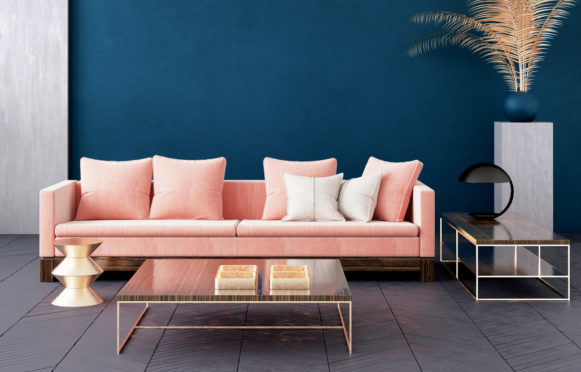Since the start of March online searches for DIY tips have more than doubled, with many home owners using their time in lockdown to spruce up their homes.
Whether you’re simply adding a few accessories or completely transforming a room, it’s important to get it right.
Here’s how to add a splash a colour to your rooms, and find the perfect neutral shades to match.
Match red with light blue and brown
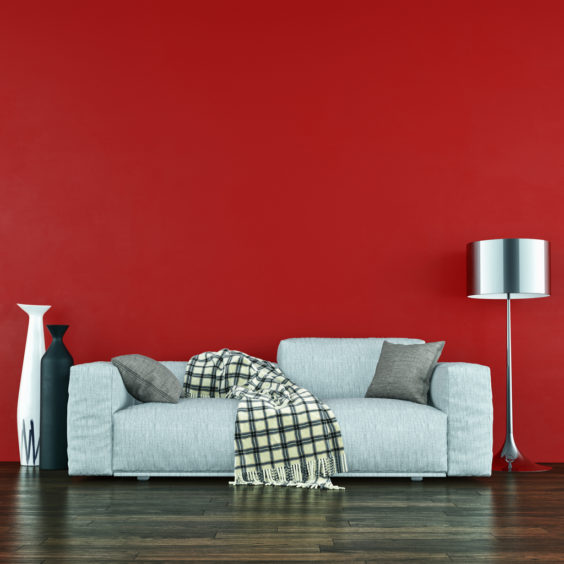
Red is a powerful colour and used incorrectly, can make a room look overwhelming or intimidating.
However, red can also create feelings of warmth and cosiness, depending on what it is matched with.
Consider adding touches of light blue or teal – relaxing, yet vibrant colours that perfectly complement deep reds.
A wooden base and monochrome accessories will also frame the bright colours perfectly.
Match blue with millennial pink and grey
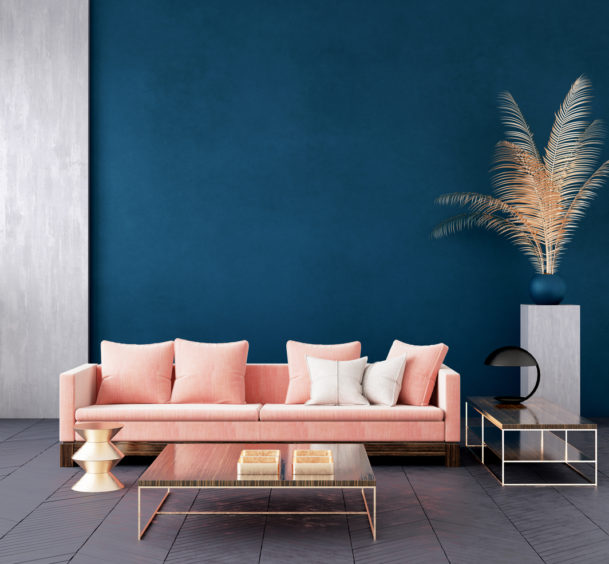
Blue is an incredibly versatile shade that can be used to create all kinds of atmospheres in a home.
This colour mainly offers a calming feel, which can be amplified by combining it with pinks and greys.
Millennial or dusty pinks add a spark of playfulness, without being garish, while grey notes offer timeless elegance.
Match green with burnt orange, light brown and grey
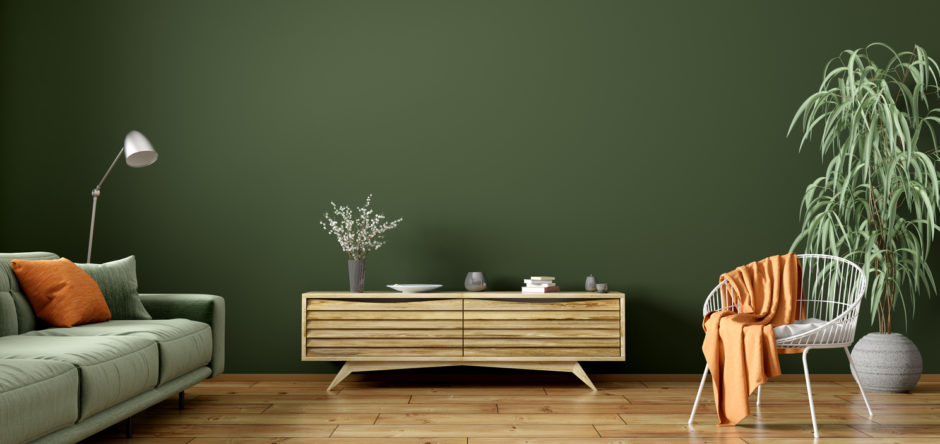
It’s said red and green should never be seen, but no-one said anything about green and burnt orange – the fashionable newcomer that adds a homely warmth to any room.
This shade of orange is a brilliant companion for green interiors and helps to enhance the natural, organic vibe that works so well in living rooms.
Light wooden furniture and grey accessories complete the look and offer an effortless finish.
Match yellow with baby blue, light brown and sage
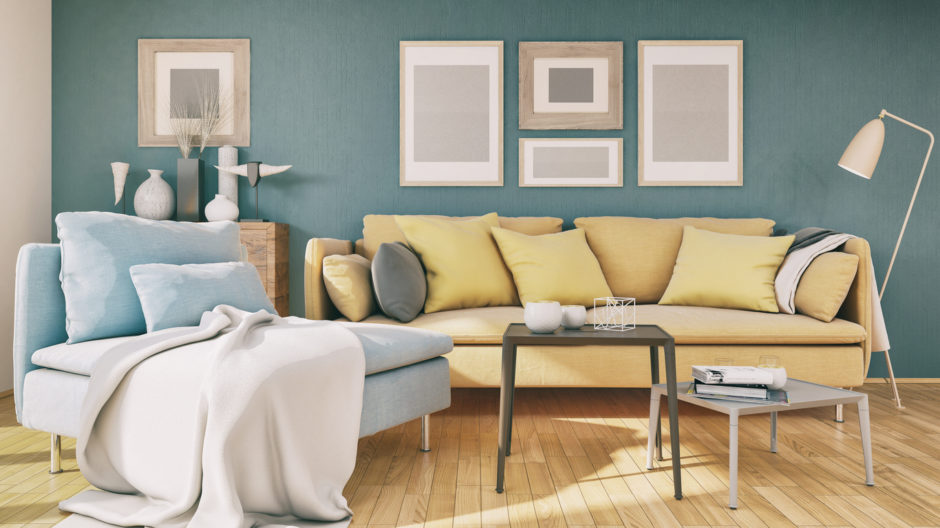
Another colour that has the power to be overbearing if misused is yellow.
This bright shade brings a flash of life and energy that, if controlled, can totally transform a faded room.
Try pairing yellow with baby blue and light wood to create a beach feel and transport the mind to sandy boardwalks.
Match orange with yellow, brown and black
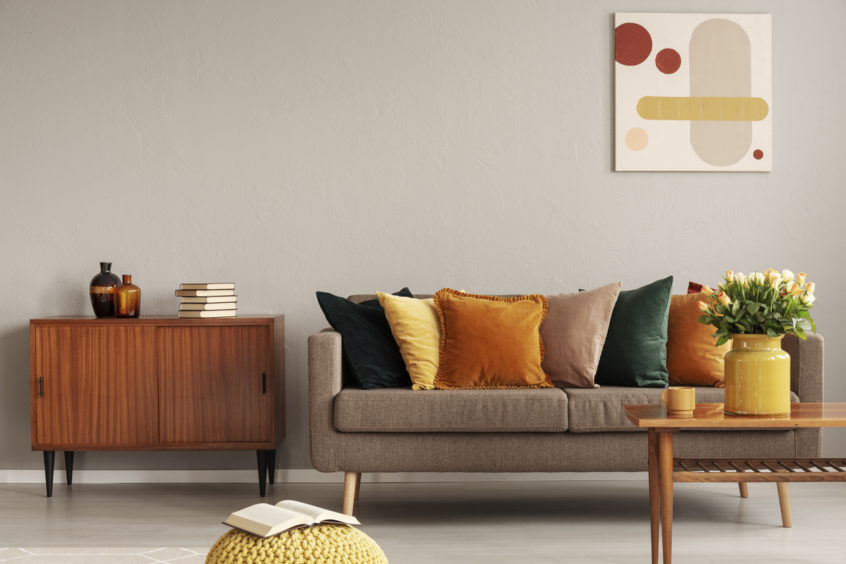
Orange doesn’t just help to bring out the best in other colours – it can also stand out on its own.
A great way to accentuate the dazzling charm that orange brings is to match it with earthy colours like brown or black.
Add a yellow accessory or two to further bring out those fiery tones.
Match purple with light grey and white
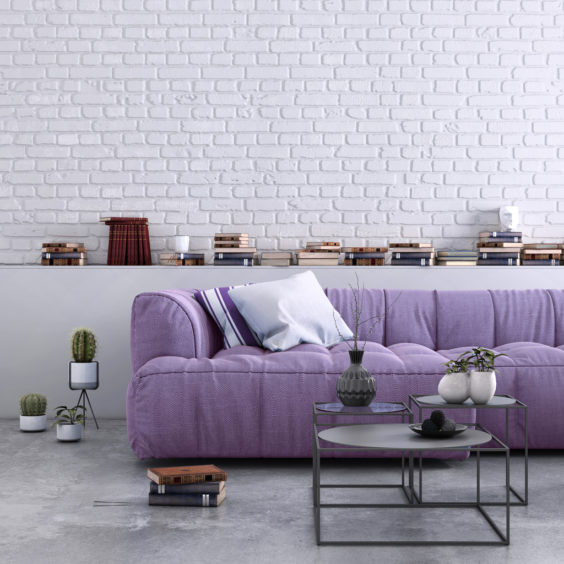
Purple and grey is a classic pairing in interior design, and for good reason.
The combination oozes class and creates a sense of effortless luxury.
Purple relaxes the room, while light shades of grey match perfectly to bring an edgy yet sophisticated style.
Add splashes of white to brighten the space and highlight the other colours.
For more advice on how to match bright colours to neutral shades, visit: www.scs.co.uk/colour-matching
